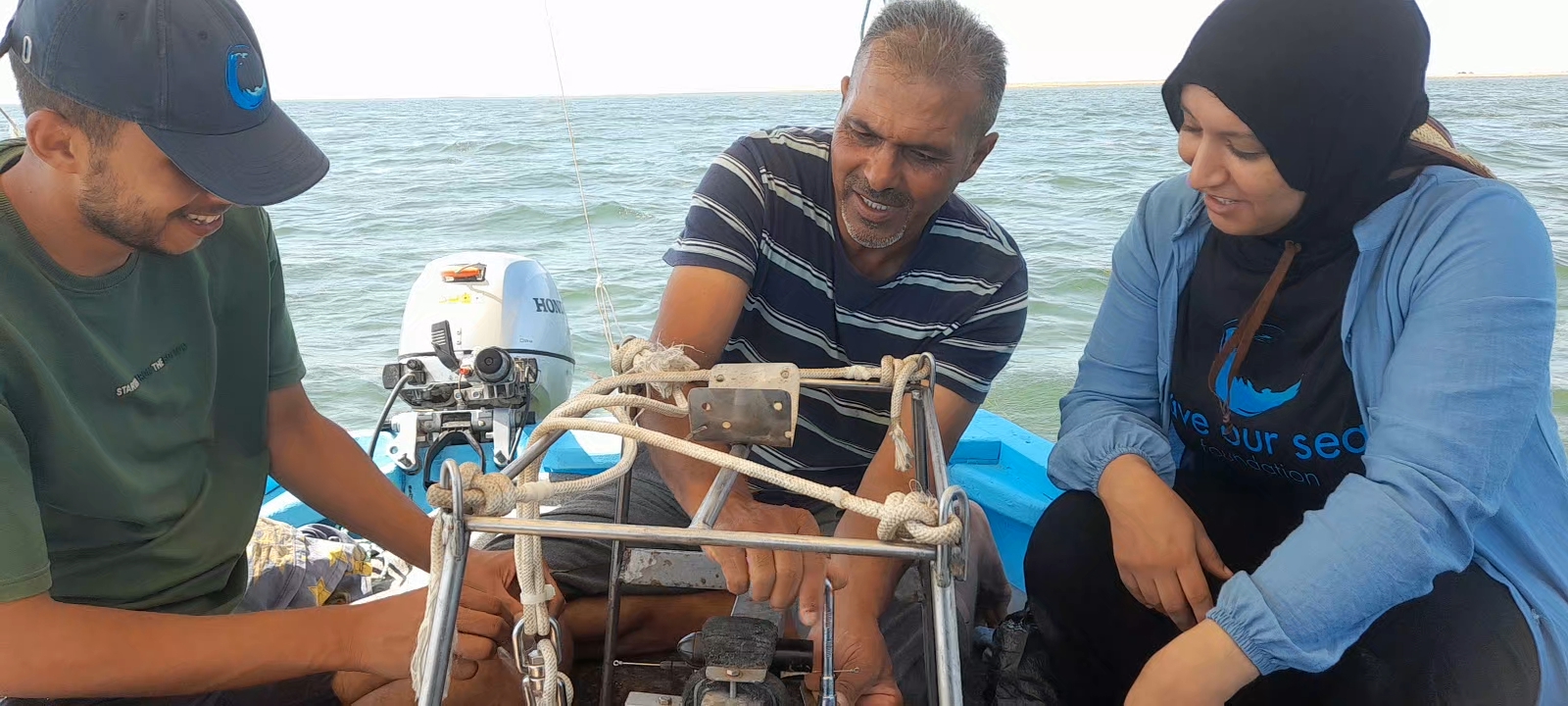Between nets and cameras: exploring the hidden life of sharks and rays in the Gulf of Gabès
For many years, my encounters with sharks and rays in the Gulf of Gabès were limited to the landing sites. There, I only saw them dead, brought in by fishing nets. That was my first connection with these species, and it made me realise how little we actually know about their lives in the sea.
Today, with the support of the Save Our Seas Foundation (SOSF), and in collaboration with my colleagues Ahmed Chahine Ben Romdhane and Iheb Awled Saleh, as well as local fishers, we are working to observe these animals in their natural environment. We deploy underwater cameras along the coast of Kerkennah using two approaches: one based on previous capture records of guitarfish and sandbar sharks, and another chosen randomly in fishing grounds indicated by the fishers.

Preparing the BRUVS system before deployment at sea. Photo © Sarra Louhichi
Our work focuses on shallow coastal waters, which may serve as nursery and aggregation areas, especially for guitarfish. Identifying these zones is important for understanding their ecological role and for guiding conservation efforts.

Checking on the camera before immersion. Photo © Sarra Louhichi
The fieldwork requires coordination and effort. Cameras are prepared, lowered into the water, left to record, and later retrieved. It is a team effort built on trust and cooperation between researchers and fishers.
Whenever possible, we also encourage fishers to release animals back into the sea, especially those at sensitive life stages or belonging to vulnerable species. Such practices can help fishers build the habit of releasing sensitive species back into the sea.
